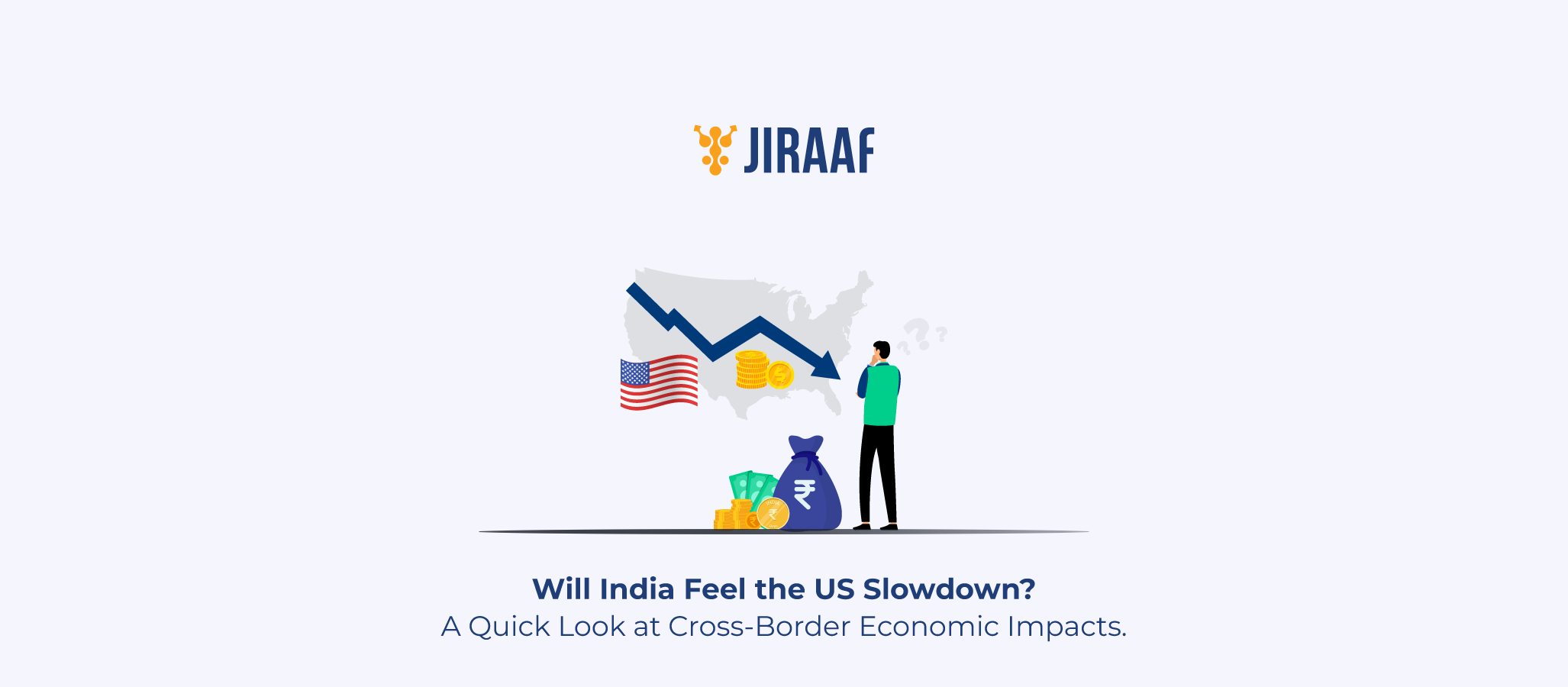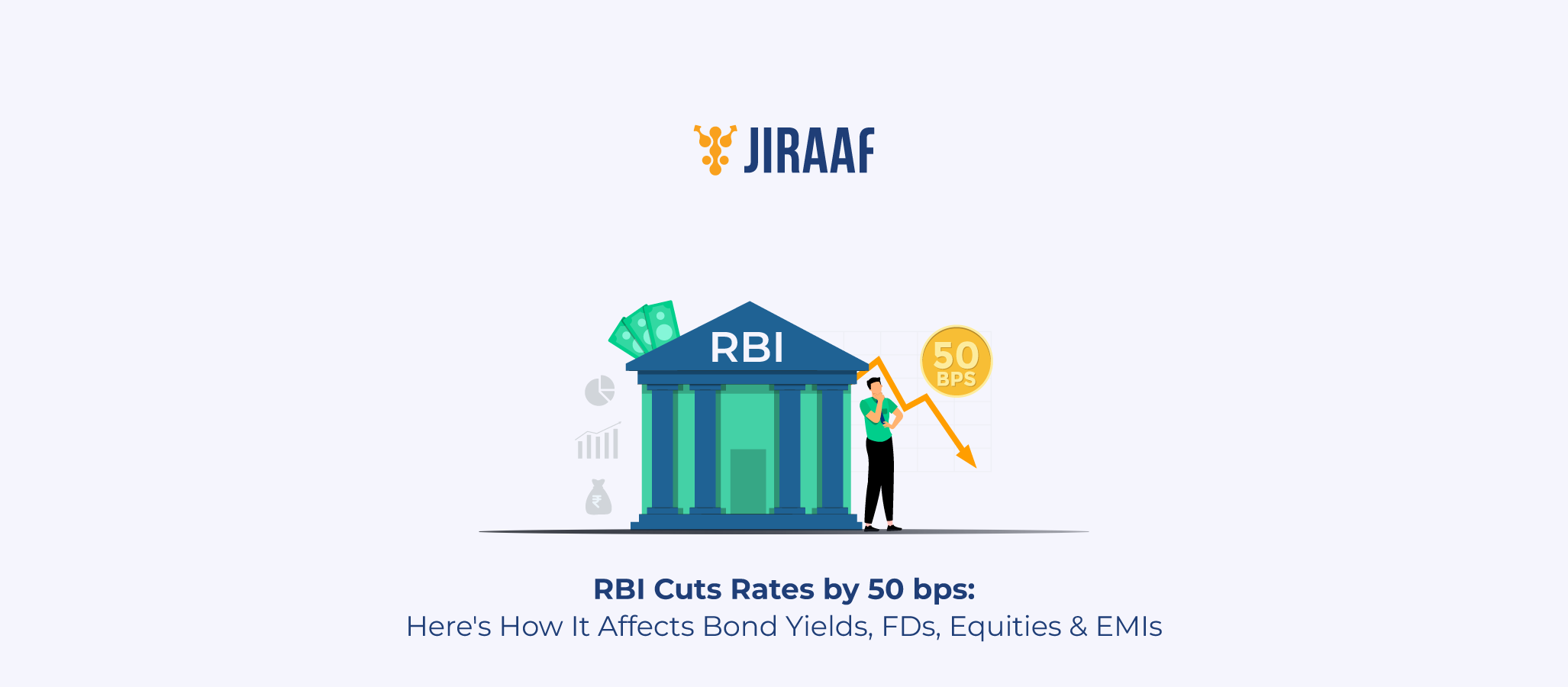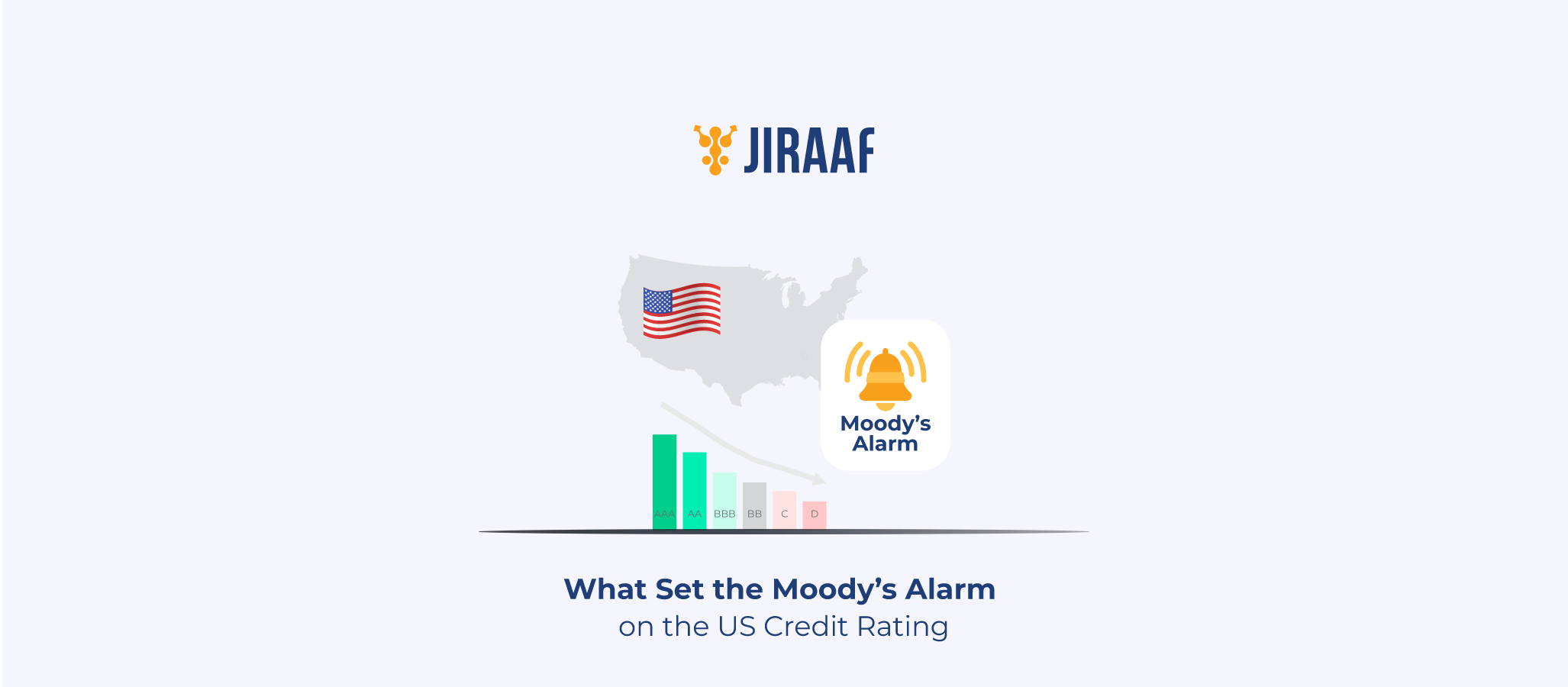It begins with a whisper, not a bang. It’s usually a slight dip in consumer confidence, a weaker job market report, rising inflation, squeezing corporate margins, degrowth in corporate earnings, etc. that keep evolving quietly until the central banks switch to a monetary tightening mode to control inflation, and suddenly everyone is talking about the “R” word – recession.
The word ‘recession’ is doing the rounds, as the chatter around a potential US economic slowdown is gaining momentum. This isn’t the first time the financial world has contemplated a US recession, and it certainly won’t be the last.
The Indian investors are left wondering what a US recession would mean for Indian equity markets. For Indian investors, the question is both timeless and timely: if America sneezes, will India still catch a cold? Or will the Indian market decouple from the US market, charting its course?
As whispers of an impending US recession grow louder, Indian investors are looking to build a resilient portfolio by adjusting their asset allocation during recession by adding recession-proof investments.
What is a Recession?
A recession, by definition, is a period of economic slowdown during which trade and industrial activity are reduced, leading to a decline in gross domestic product (GDP). The GDP must contract for two consecutive quarters for a slowdown to be considered a recession.
Economies function in cycles. While no two cycles are ever the same, the transition from one cycle to another is marked by slower economic growth, and this is commonly referred to as a recession.
A recession has a ripple effect as we live in a world of open economies. A US recession would mean a global slowdown, and thus, fears of a US recession are almost always taken very seriously. Let’s examine why the financial pundits are currently fearing a US recession.
Why is the US at a Recession Risk Now?
The fears of a US recession are gaining ground due to the financial and economic fragility of the US economy. Following the COVID-19 pandemic, the US economy has been battling inflation with the Federal Reserve initiating an interest rate hike regime in an effort to combat inflation.
The interest rates in the US reached a decade-high, making borrowing expensive and leading to a slowdown in economic activity. The Fed has largely been successful in curbing runaway inflation, however, inflation still remains above its 2% long-term target rate, at 2.4% as of April 2025.
Therefore, the May 7, 2025, Fed meeting did not result in a rate cut in the US. According to Federal Reserve Chair Powell, the combination of a higher inflation rate, a slowing GDP in the first quarter of 2025, and concerns around an increase in unemployment, along with tariff uncertainty, has prompted a wait-and-see stance for the Fed.
In fact, the combination of higher interest rates, higher-than-expected inflation, and a risk of increased unemployment, along with a mild reduction in consumer expenditure, indicates the possibility of a ‘stagflation’.
Stagflation is a combination of slow economic growth, sticky high inflation, high unemployment, and stagnant demand.
While it is too soon to comment on whether or not, and when the US economy can enter a stagflationary phase or a recessionary phase, the caution exhibited by the Fed Chief in the May 7 meeting signals a probable brief economic slowdown in the US economy.
Experts believe that the US recession might not be as deep as the 2008 financial crisis, or it may be entirely averted, as the tariff wars have started to calm down, with the US discussing trade deals with all major economies, including China.
However, the fears of a US recession will persist until there is concrete progress on the US tariffs front, and the US economy starts showing signs of revival.
While a recession is a possibility, let’s examine how past US economic slowdowns, such as the 2008 crisis, impacted the Indian equity markets, allowing you to draw parallels and make recession-proof investments.
Historical Impact of the US Recession on Indian Markets
A US recession would mean a correction in the US equity market, which is likely to have a domino effect on other economies, including India.
Historically, the Indian stock market has shown a strong correlation with the US economic slowdown. Take, for instance, the 2008 financial crisis. Lehman Brothers had collapsed, Wall Street had crumbled, and the shockwaves reached Dalal Street. The Sensex lost over 50% of its value in a matter of months due to a sharp decline in exports and the withdrawal of billions by foreign investors.
In 2001, following the dot-com burst and the 9/11 attacks, the U.S. economy contracted, and India, which was still in the process of liberalizing its economy, felt the impact—albeit more muted. Even during the COVID-19 pandemic in 2020, panic in U.S. markets triggered a global selloff, with Indian equities suffering sharp corrections before a swift recovery.
If history is taken into account, the pattern is clear: when the U.S. markets stumble, Indian markets tend to react, often with amplified volatility.
However, the playbook might see a change this time around. Let’s examine the reasons that can lead to the Indian economy decoupling from its US counterpart and how this can benefit Indian investors.
Could the Indian Economy Decouple This Time?
While the US is hesitant to cut interest rates owing to sticky inflation, the Indian economy is following a different playbook. Inflation in India is well under control, with the April number coming at 3.16%, which is well below the RBI’s target of 4%.
The cooling inflation propelled the RBI to cut the interest rates by 25 basis points (bps), bringing the effective interest rate to 6%. This was the second rate cut, and the RBI has signalled two more rate cuts this year. This will reduce the effective interest rate to 5.5% by the end of FY 2025-26, making borrowings more affordable.
Additionally, Indian markets had already begun correcting since September 2024, driven by concerns over inflated valuations and slowing earnings growth. The tide is almost on the verge of reversal for India, if macroeconomic factors remain constant.
The Indian Inc. is declaring Q1 results for FY 2025-26, and the results are showing signs of economic revival. The FY 2025-26 Q1 results of India Inc. have shown the highest sequential quarterly growth of the past two years. The Indian manufacturing and services PMIs both registered growth in April this year, pointing to expansion in the service and manufacturing sectors.
The numbers present a strong case of economic decoupling between India and the US this economic cycle, bringing a ray of hope for Indian investors.
While the economies may decouple in the coming months, the impact of a potential US recession on the Indian markets is expected to be measured and short-lived. Sectors closely associated with the US economy, such as export-oriented sectors and IT service sectors, may experience a greater impact compared to sectors focused on serving the Indian market.
Let’s see how the sector-wise impact of a US recession could pan out and how you can use these data points to build a recession-proof portfolio.
Sector-Wise Impact: What May Perform and What May Lag
The impact of the US recession will be varied across sectors. Some sectors may experience a greater impact, while others can also benefit from the recession. Here is how the sector-wise impact may pan out in the event of a US recession.
Export-Driven Sectors
Sectors such as information technology (IT), pharmaceuticals, textiles, and auto components, which are heavily reliant on exports, are likely to take a hit. This is because a US recession could lead to a global slowdown, which in turn would affect Indian exports to countries worldwide.
IT services companies, which derive a significant portion of their revenue from U.S. clients, often experience deferred projects and shrinking budgets during economic slowdowns.
Pharma, though traditionally resilient, could face pricing pressure in the U.S. generics market. The same applies to textile exports and gems and jewellery, both of which are highly sensitive to discretionary spending in the West.
Stocks in these sectors may correct before consolidating, presenting a good opportunity for rebalancing.
Domestic-Focused Sectors
The Indian economy is on a stable footing. Inflation is under control, and corporate earnings are starting to show signs of revival and growth. Furthermore, urban demand may see a boost due to increased disposable income among the Indian middle class as a result of the income tax breaks. Rural demand could benefit from a good monsoon, which would further boost the economy.
Domestic consumption-driven sectors, such as FMCG, banking, infrastructure, and the auto industry (especially two-wheelers), may fare better. Real estate and financials could experience mixed fortunes, with reducing interest rates and easing liquidity conditions being key determinants for their growth.
You can consider these factors to optimize asset allocation during a recession. Additionally, there are some tried-and-tested recession-proof investment strategies that you can implement to minimize the impact on your investments.
Recession-Proof Investment Strategies for Indian Investors
The question is, can you safeguard your investments and make them recession-proof? The simple answer is yes, you hedge your portfolio against recession risk to an extent through well-researched, thoughtful investments.
Diversification is the Key
This piece of investment wisdom is as old as time, yet remains as relevant as it was decades ago. Don’t put all your eggs in one basket—especially not the equity basket. Diversify across asset classes (equity, debt, gold, real estate), geographies (domestic and international exposure), and sectors.
Equity mutual funds, debt funds, global ETFs, sovereign gold bonds—mixing them in the right proportion, depending on your risk appetite, can help ride out volatility.
Increase Debt Allocation
Debt is not volatile and can therefore be a good addition to your portfolio during uncertain times. Additionally, debt investments can help you create a secondary income stream. This can be particularly helpful during times when corporate earnings are under pressure, potentially impacting dividend income during challenging economic periods.
You can diversify within debt investments by adding both government and corporate bonds of varying maturities to optimize the risk-return ratio.
SIPs vs Lump Sum: What Works Better in Uncertainty
Systematic Investment Plans (SIPs) are made for uncertain times. You invest a fixed amount regularly, benefiting from averaging while removing emotions and the pressure of timing the market from the equation. It’s a disciplined way to build wealth, especially when markets are unpredictable.
Lump sum investing can also be effective, but only if you have a long time horizon and are willing to tolerate volatility. Additionally, you should have the time and the know-how to time the market.
If you are sitting on cash, you can park the money in liquid or debt mutual funds and then gradually transfer it to equity mutual funds using a systematic transfer plan (STP).
Alternative Investment Options
While there are ample mainstream investment options to diversify your portfolio, you can also experiment with alternative investment options, such as Real Estate Investment Trusts (REITs) and Alternative Investment Funds (AIFs), to further diversify your investments.
However, experts recommend a close examination of your financial goals and risk appetite before investing in alternative investment options.
Expert Opinions & Forecasts
Experts hold divided opinions on how deep and prolonged the next US recession could be, as well as when it may occur, if it happens at all. While there is no consensus among economists about the U.S. recession, the U.S. Federal Reserve has been attempting to engineer a “soft landing,” where inflation cools without triggering widespread unemployment or a decline in consumer spending.
Some economists believe the U.S. may avoid a full-blown recession and instead experience a slowdown in growth, while others think that a recession is imminent.
JPMorgan, for instance, has maintained its probability of a US recession at 60%, while others, such as S&P Global, have also raised their probability to 35%, pending the imposition of tariffs.
Developments such as the lowered tariffs with countries like India and the US-China trade deal provide a glimmer of hope, as a decrease in tariffs would significantly ease inflationary pressure in the US, making a strong case for rate cuts, which in turn would boost the economy.
In India, the RBI has shifted its stance to accommodative, while also reducing interest rates by a total of 50 basis points in the past two meetings. This signals an expansionary approach, which is beneficial for economic growth.
The divergence in economic stance between the two central banks points to a decoupling of the Indian and US economic cycles, which could prove beneficial for Indian investors.
Building a Resilient Portfolio in 2025 and Beyond
Economic downturns are inevitable. What matters is how you prepare for them.
A resilient portfolio in 2025 and beyond will not just be about returns—it will be about adaptability. A recession-proof portfolio will consist of investments spread across equities and mutual funds of all caps, government and corporate debt, and gold.
Diversification will help you optimize the risk-return profile while adding much-needed stability to your portfolio during volatile times.
Discover fixed income investments with Jiraaf, a SEBI registered online bonds platform that educates and brings access to a wide array of bonds. Sign up today to explore diversified fixed income investment opportunities to support your goal-based wealth creation journey. Start investing!



